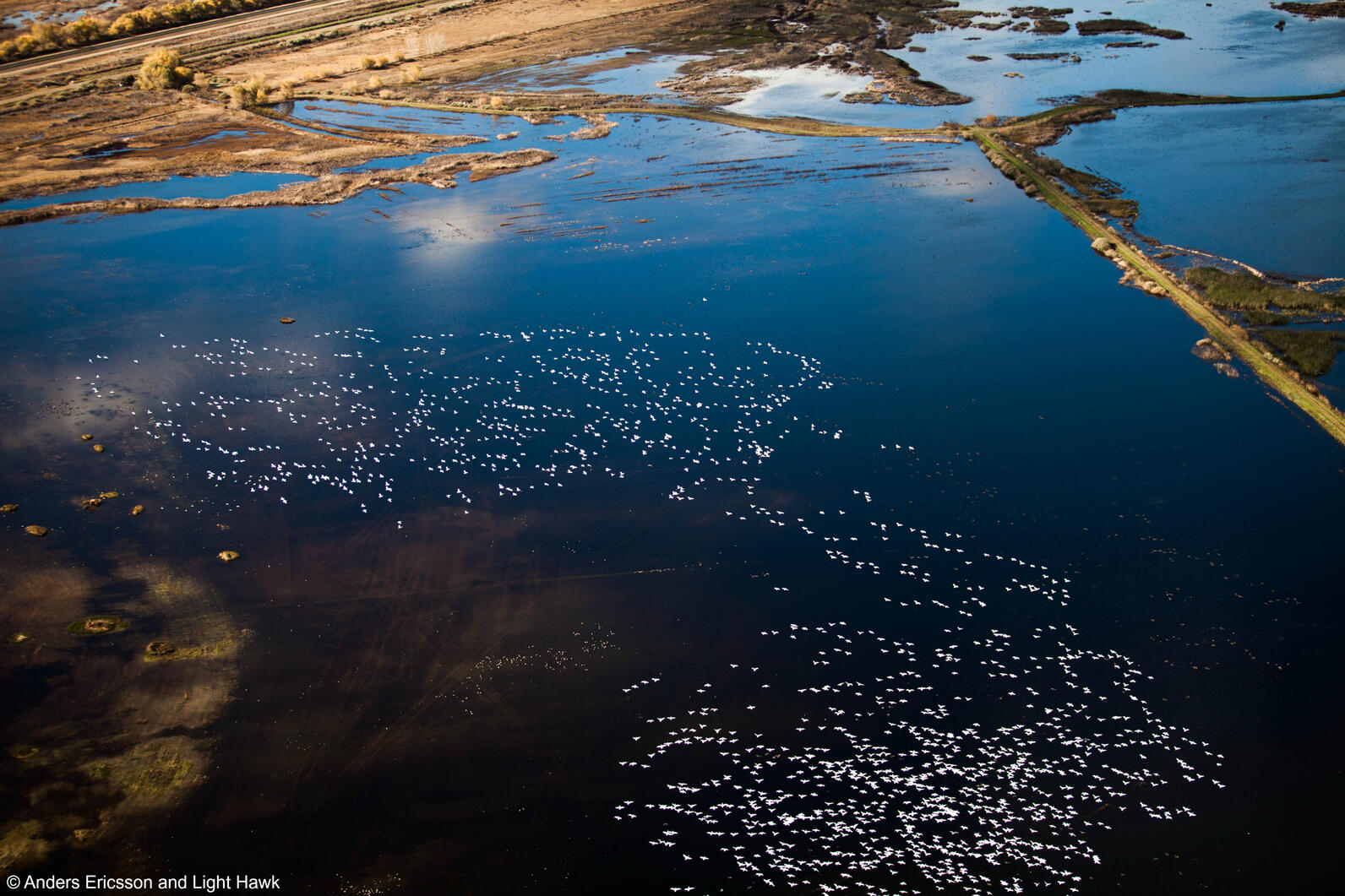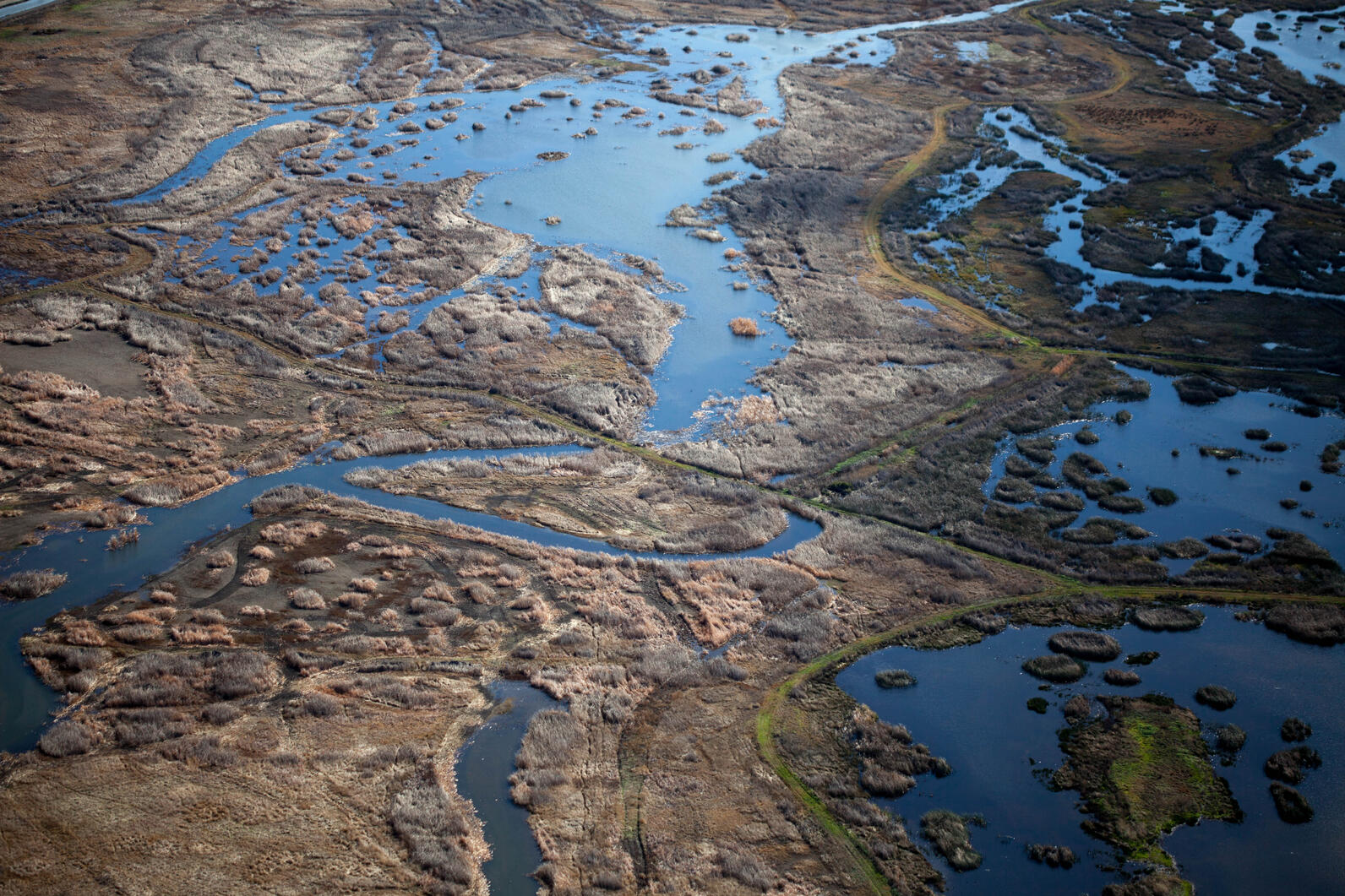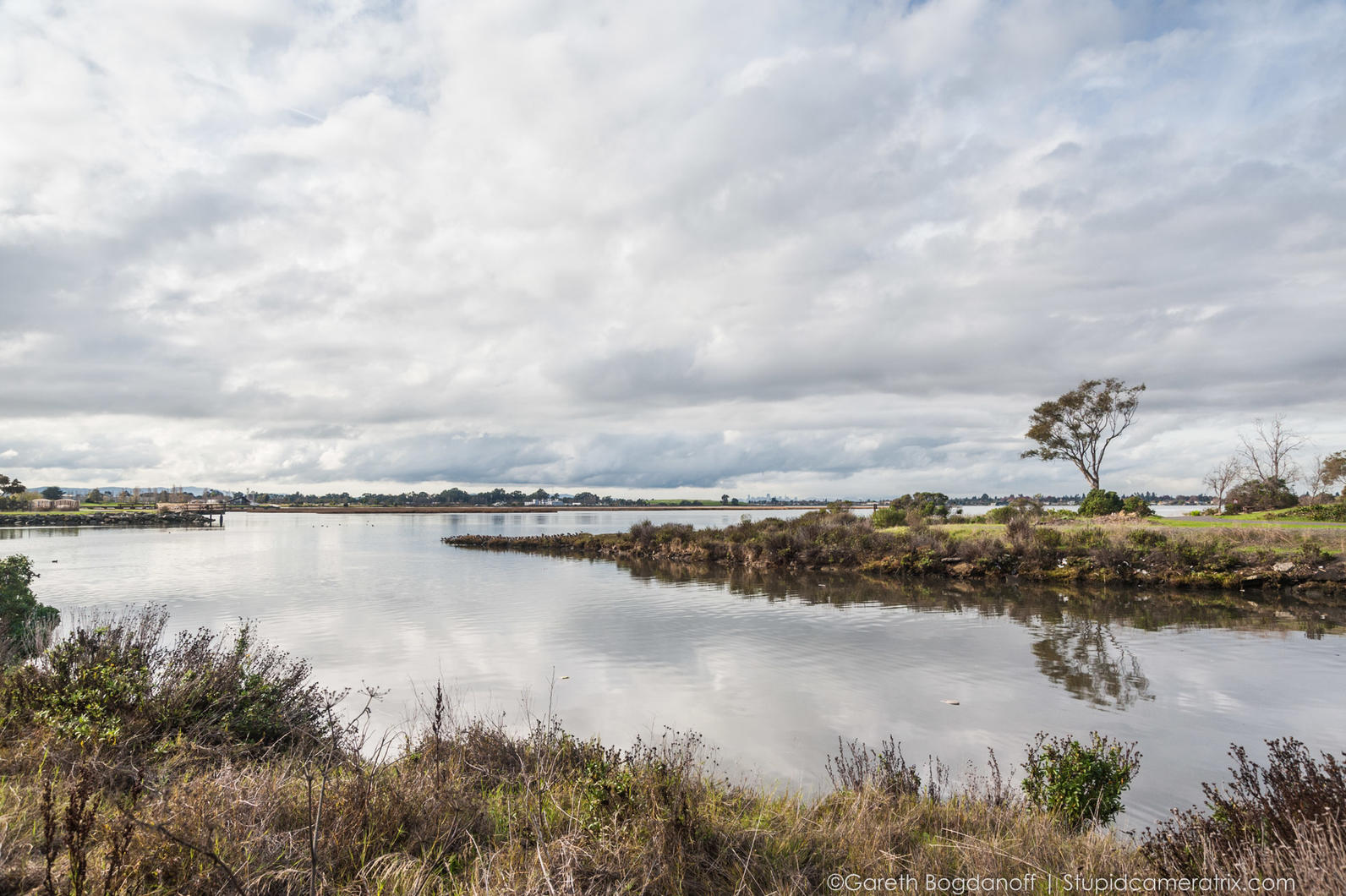Northern Pintail
Latin: Anas acuta
Water and wetlands are vital for the survival of California’s birds.
Wood Duck Photo: Harry Collins
Water is fundamental to our lives, our communities, and our economy. Water is also of vital importance to the survival of California’s birds and the habitats that support them. From our coastal estuaries to inland wetlands and waterbodies, water is the foundation of life.

That’s why Audubon California has been leading efforts to secure water when and where birds and people need it. This includes working on the policies and in the places where water matters most. We advocate for birds and drinking water for communities in five key ways:
Read more about the important work that Audubon California is doing to secure water for birds and for communities below.

Vital protections are needed for wetlands that depend on groundwater under the Sustainable Groundwater Management Act
Audubon California continues to advocate for adequate water supplies for Central Valley refuges.
Vibrant ecosystems can absorb carbon dioxide helping mitigate climate change and nitrogen cleaning the run-off from human use of the land for agriculture or development.
First-of-its-kind project restores 400 acres of tidal marsh habitat along Sonoma Creek in northern San Francisco Bay, helping withstand sea level rise and storm surges from climate change.
Audubon California is nearing the end of a massive restoration of wetland habitat in San Francisco Bay.
California is first in nation to commit to protecting 30% of our lands and waters by 2030.
Audubon California is helping secure the future of one of the state's key bird habitats.
Coalition of conservation and community groups says groundbreaking is positive step towards ending years of inaction at California’s largest lake.
One of the first ten sites in the U.S. to receive "Globally Important Bird Area" recognition.
A recent opinion piece in the Bakersfield Californian argued that while Central Valley refuges are getting 100 percent of their water allocations, farmers were getting substantially less. That's just not true, and Harry Love of the Kern Audubon Society recently took to the same paper to explain why:
"Most of the Central Valley Project’s farm and urban water contractors will receive 100 percent of their contract amount with the federal government. The most junior South of Delta federal water contractors are projected to receive 65 percent of their contract amount and that allocation will likely increase in coming months.
"But there is another user that will not receive full water supplies – Central Valley wetlands. More than 90 percent of the Central Valley’s historic wetlands are gone. Our waterfowl populations have fallen from 40 million historically to 5 million today. Even at this diminished level, the Valley is one of the most important places in America for ducks, geese and other migratory waterbirds ...
"This year, the federal government announced an allocation of 100 percent of the minimum water supply for wetlands but this is far short of the full water contracts for our wetlands. The Bureau of Reclamation has an obligation to purchase or develop additional water supplies to meet the full needs of the Valley’s few remaining wetlands.
It is not clear yet how close the Bureau will get this fall to delivering full water supplies when wetlands need water most. In recent years, federal agencies have provided an average of only 32 percent of this critical water for south of Delta refuges. Unfortunately, this shortage of water for Valley wetlands is often overlooked.
To create critical habitat, hunting opportunities, and more, Central Valley wetlands are highly managed and irrigated, much like farmland. So when wetland water managers get only 32 percent of a key supply, it matters. This shortage reduces spring and summer habitat for ducks that breed here. It reduces the amount of food from wetlands plants that feed migratory birds in the fall. It increases the risk of overcrowding and disease.
Like Valley farmers, duck hunters and wetland managers need water supplies to manage their lands to support wildlife and recreational opportunities. However, in the last 25 years, the Bureau has not once delivered all of the water owed to wetlands. The truth is that the Valley’s two large water projects, the Central Valley Project and the State Water Project, have never delivered 100 percent of their combined water obligations in a single year."
California Gov. Jerry Brown today declared the end of the state's drought emergency:
“This drought emergency is over, but the next drought could be around the corner,” Brown said in a statement. “Conservation must remain a way of life.”

News of proposed budget cuts at the Environmental Protection Agency bode ill for conservation in San Francisco Bay and San Diego, as two major programs are on the chopping block.
In San Francisco Bay, the EPA looks to cut its entire $4.8 million budget for clean water and wetlands restoration programs. This is particularly bad news, as San Francisco Bay has never received a proportionate share of federal restoration funding.
Last year, residents of Bay Area communities approved Measure AA, which will raise about $500 million over the next 20 years for wetlands restoration. Leaders had intended to use this money to leverage greater investment from the federal government.
The EPA is also proposing to cut the $3 million it spent last year on cleaning up pollution in the Tijuana Estuary down to $275,000. This area is the last remaining large wetland in Southern California, and is an Important Bird Area. Endangered Ridgeways Rails and Light-footed Rails make great use of the area.
In addition to cuts specifically targeting California, we also learned of proposed cuts that will go into effect nationwide, but will certainly impact things we Californians care about, such as gutting programs that test coastal water quality, educate our children about nature, address climate change, and reduce pollution in communities suffering the most.
Please raise your voice against these cuts by sending an email to your members of Congress.
We've talked about this before, but pumping from aquifers under the San Joaquin Valley is continuing to cause the valley floor to sink significantly:
Ground levels in some areas have dropped 1 to 2 feet in the last two years, creating deeper and wider “bowls” that continue to threaten the vital network of channels that transport water across Southern California, researchers say.
The findings underscore the fact that even as record rain and snow have brought much of California out of severe drought, some parts of the state will probably struggle with water problems for years to come.
Great article in the Los Angeles Times about how recent rains have brought the struggling Yolo Bypass near Sacramento back to life.
Mono Lake is an important place for birds, and it has been teetering lately as a result of declining water levels. That's changing with these recent rains, notes the Los Angeles Times.
Buried in this mid-December article about negotiations to finalize a plan to avoid shortages at the Colorado River are early details of the much-awaited 10-year management plan for the Salton Sea. This is the plan that the state will eventually rely upon to protect bird habitat at the Salton Sea, and reduce dangerous dust pollution caused as the sea recedes. Anyway, here's what the article says about the plan:
"The document, which was obtained by The Desert Sun, summarizes the state’s proposals for a “smaller but sustainable lake” and lays out broad goals for building new wetlands along the lake’s receding shores to cover up stretches of exposed lake bottom and provide habitat for birds.
The document says an estimated 50,000 acres of “playa” will be left dry and exposed around the lake by 2028. The construction of “water backbone infrastructure” is to begin with ponds where water from the lake’s tributaries will be routed to create new wetlands. According to the 24-page document, which describes the Salton Sea Management Program, initial construction will start on exposed lakebed west of the mouth of the New River “to take advantage of existing permits.”
The draft says that in addition to building wetlands, the state also will use “waterless dust suppression” techniques in some areas. Those approaches can include using tractors to plow stretches of lakebed to create dust-catching furrows, or even laying down bales of hay on the exposed lake bottom as barriers to block windblown dust."
Audubon California has been deeply involved in the process of creating the state management plan, and will continue to advocate for sufficient habitat for birds and other wildlife. A recent report from Audubon California determined that the Salton Sea needs to provide about 58,000 acres of habitat to maintain the bird populations currently using the lake.
Audubon California's Khara Strum recently took to Capital Public radio to talk about migratory birds in the Central Valley, and particularly how they use agricultural fields as surrogate habitat. Listen to the interview here.
Audubon California Newsletter comes to your inbox monthly with breaking news and important conservation updates from our state.
Help secure the future for birds at risk from climate change, habitat loss and other threats. Your support will power our science, education, advocacy and on-the-ground conservation efforts.
Your advocacy helped save the California Condor. Tell your reps you want a climate bond to ensure the future of critical conservation efforts.